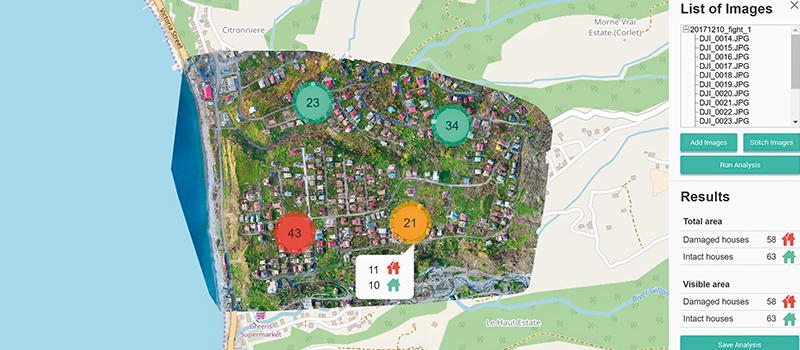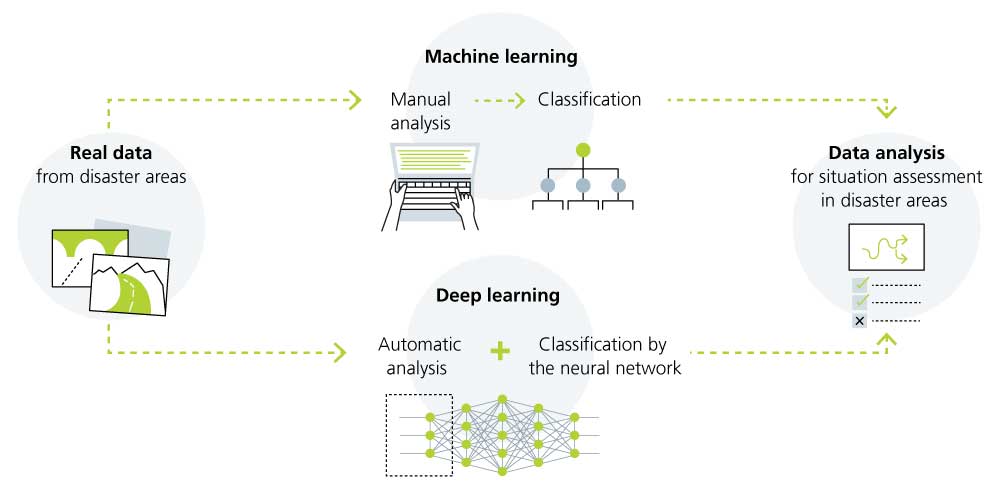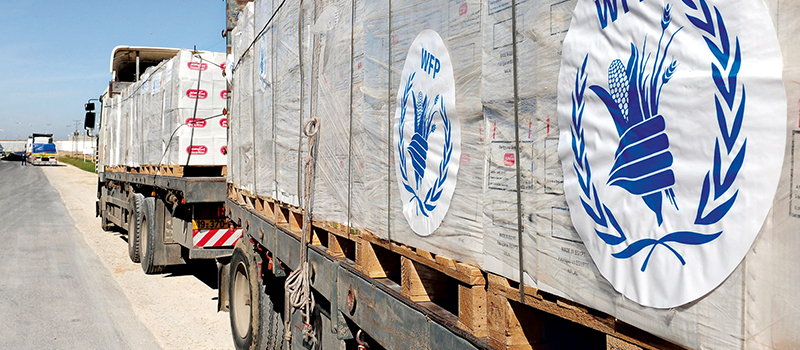Why do we need this new technology?
Following natural disasters such as earthquakes, tsunamis, and hurricanes, there is tremendous time pressure to distribute aid materials in disaster-stricken regions so they reach victims there in time. The first aid organizations typically reach the scene in just hours. But when they get there, they find an extremely confusing situation, with heavily damaged roads and settlements and people fleeing from one area to another. Emergency coordinators currently use satellite images to gauge the extent of the disaster, the number of people who need help, and potential search and rescue routes. But precious time passes before the images of the hard-hit areas are available and have been analyzed.
To meet this need, the United Nations World Food Program (WFP) deploys drones to take aerial photos of the region affected by the disaster. Aid workers are then left to sift through hundreds of individual images to get an overview. This is a time-consuming and staff-intensive process, which is why it can only be done on a spot check basis, with incomplete coverage based on people’s »gut instincts«. Unintended outcomes can include problems like aid materials being inadvertently sent to almost uninhabited areas while people elsewhere wait in vain for life-saving assistance.
Software supported by artificial intelligence (AI) that assembles and analyzes the images automatically and in real time, even without internet access, would accelerate the process of providing humanitarian assistance while also ensuring that the aid gets to where it is needed most.





